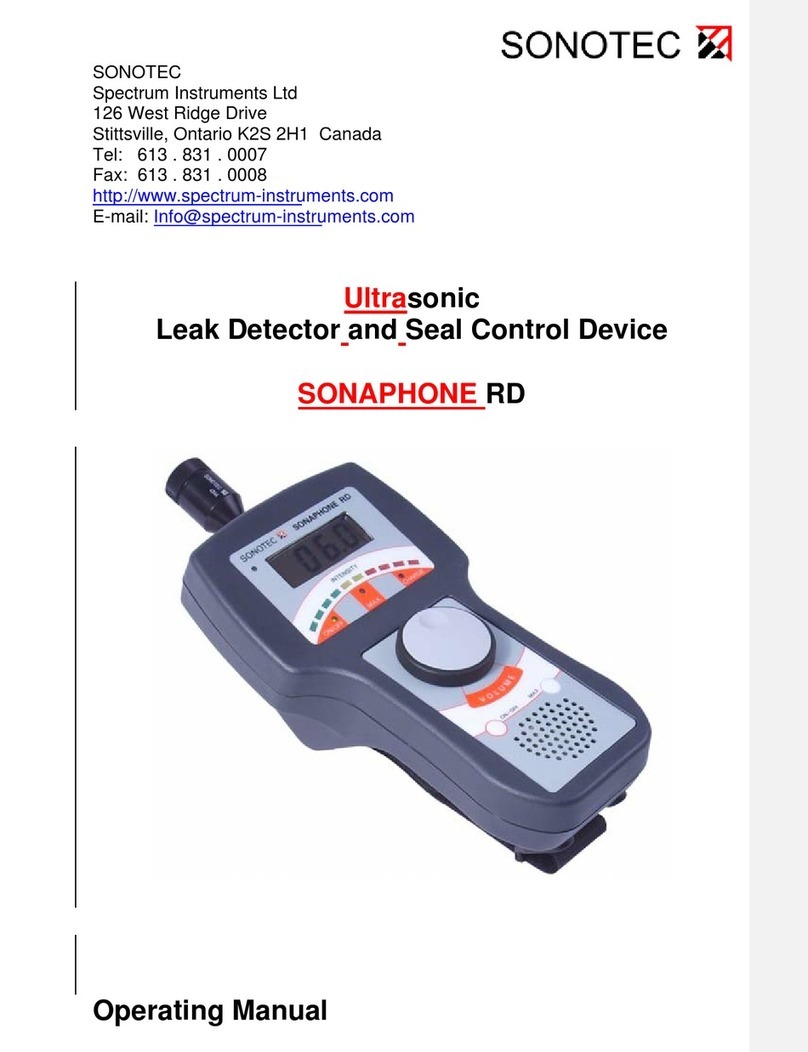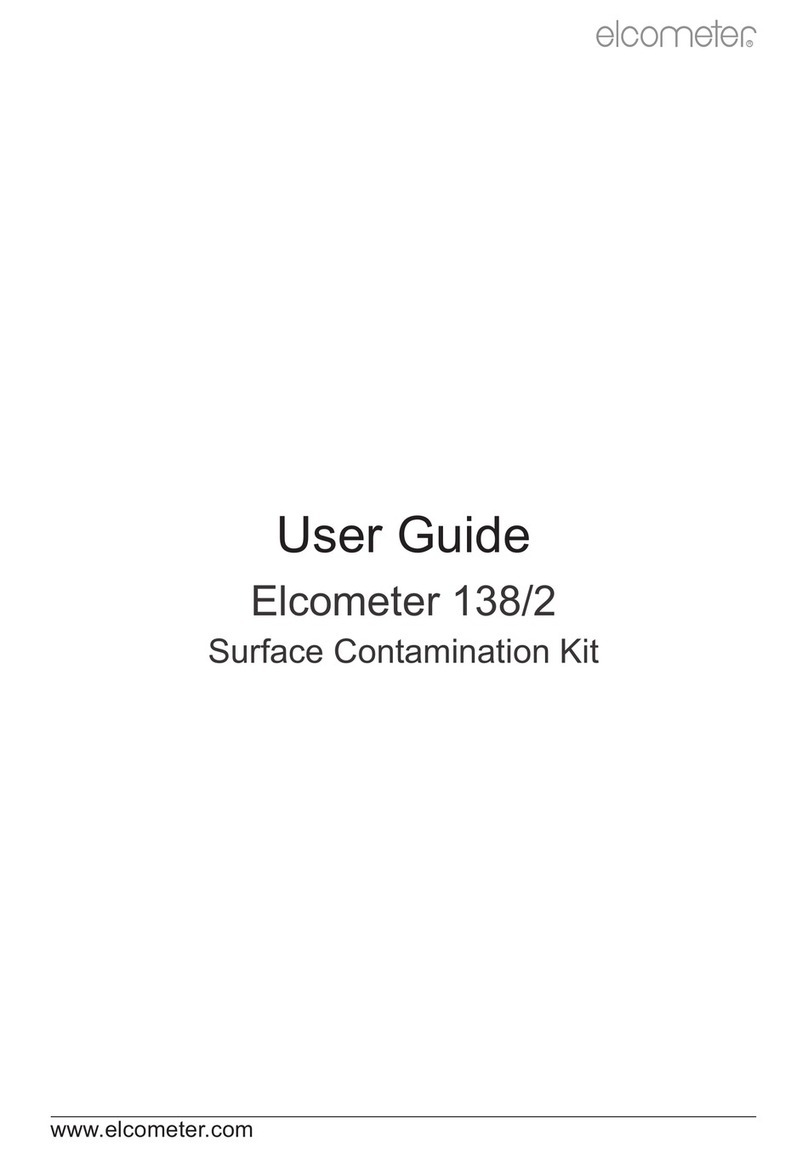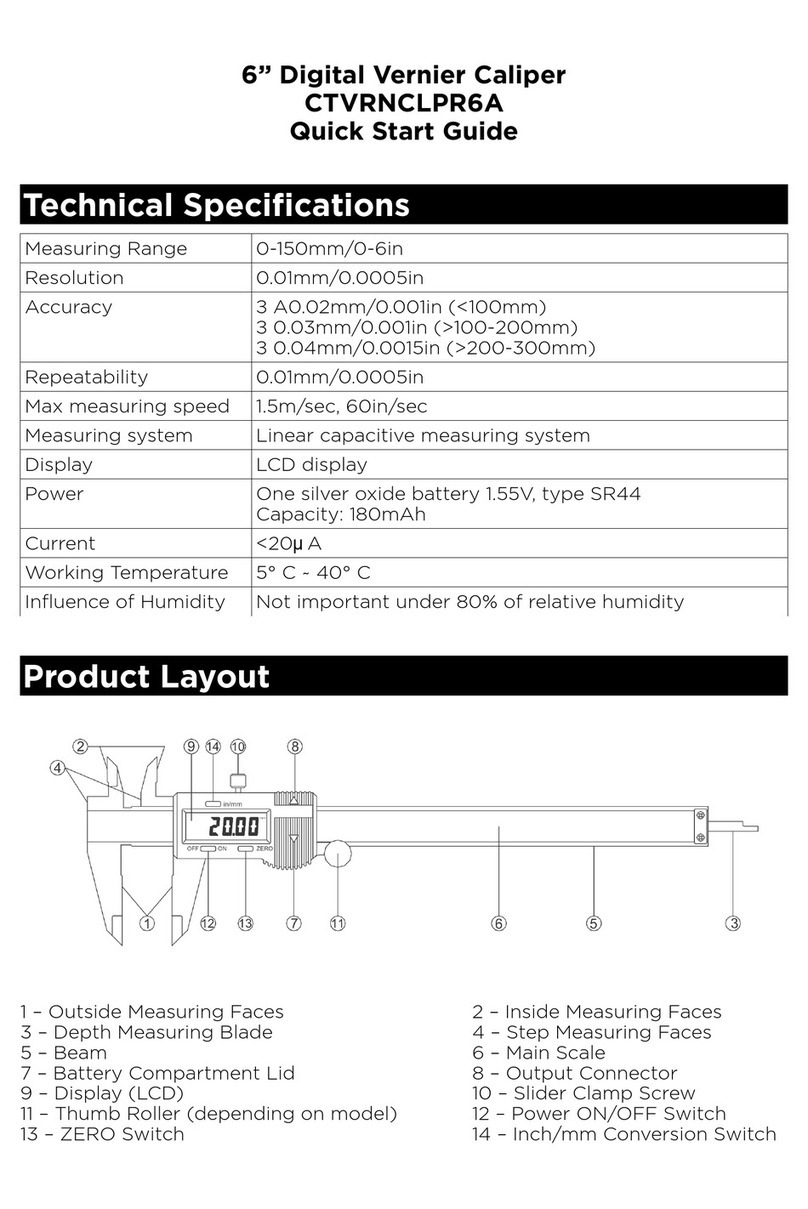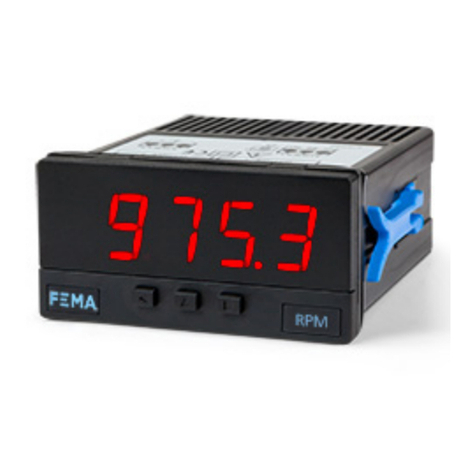Sonotec SONAPHONE M User manual

SONOTEC
Ultraschallsensorik Halle GmbH
Nauendorfer Straße 2
D-06112 Halle/Saale
Germany
Phone: +49-(0)345 - 13317-0
Fax: +49-(0)345 - 13317-99
http://www.sonotec.de
E-mail: [email protected]
Ultrasonic
Leak Detector and Leakage Tester
SONAPHONE M
Operating instructions
Version 1 Revised: 2011-09-26

OM_SPHM_engl_Vers.1_2011-09-26 Seite 2
Table of Contents
1Safety precautions..................................................4
1.1 General safety precautions for the SONAPHONE M........4
2Scope of supply ......................................................5
2.1 Summary...........................................................................5
2.2 Arrangement of devices and accessories in the
carrying case.....................................................................6
3Function description...............................................7
3.1 General information...........................................................7
3.2 SONAPHONE M connections, controls and display
elements............................................................................8
4Operation.................................................................9
4.1 Insert the batteries ............................................................9
4.2 Starting up the unit..........................................................12
4.3 Battery status indicator....................................................12
4.4 Check mode....................................................................13
4.5 Main menu ......................................................................16
4.6 Data logger......................................................................17
4.7 Test parameters..............................................................24
4.8 Settings...........................................................................27
5Using the probes...................................................29
5.1 L50 probe for air-borne noise..........................................29
5.2 L51 special probe for structure-borne noise....................30
5.3 L52 probe for steam traps and fittings.............................30
5.4 Probe for continuous testing, abrasion and cavitation
L54..................................................................................31
5.5 L53 flexible probe............................................................32
5.6 Parabolic probe L55........................................................32
6Using the accessories ..........................................33
6.1 Telescoping rod...............................................................33
6.2 Temperature sensor........................................................34

OM_SPHM_engl_Vers.1_2011-09-26 Seite 3
7PC connection & data transfer.............................35
7.1 Directory structure of the installation CD.........................36
7.2 Installation for Windows XP / Windows Vista..................36
7.3 Installation for Windows 7 ...............................................38
7.4 Power supply via USB.....................................................40
8Trouble shooting...................................................41
9Technical specifications.......................................42
10 Warranty ................................................................43

OM_SPHM_engl_Vers.1_2011-09-26 Seite 4
1 Safety precautions
1.1 General safety precautions for the SONAPHONE M
(1) The SONAPHONE M is suitable for the use at temperatures
between -10 °C and +60 °C. Store the unit at temperatures between
-20 °C and +60 °C.
(2) Make sure that you have a clear view of the SONAPHONE M and
the probes at any time of operation. Never work with the probes or the
telescoping rod in areas with live parts or areas you do not know
exactly. When locating ultrasonic signals in electrical installations, keep
a sufficient safety distance to prevent electrical flashover.
(3) Always handle the probe for structure-borne noise with care, so that
the probe tip does not cause any injuries. Use the probe carrier bag on
the shoulder strap of the leather bag when carrying it outside the
carrying case or when the probe is not in use.
(4) Use the shoulder strap on stairs, ladders, platforms etc. so that you
have your hands free to brace yourself.
(5) Avoid using the SONAPHONE M in strong electromagnetic fields.
(6) The SONAPHONE M is a testing device.
(7) SONOTEC Ultraschallsensorik Halle GmbH offers no warranty for
damages, even for harm to third parties, caused by incorrect handling of
the device.
(8) The SONAPHONE M, the probes and all accessories have a robust
casing. However, they must be protected from mechanical damage and
sharp impacts. Do not use cleansers containing solvents.

OM_SPHM_engl_Vers.1_2011-09-26 Seite 5
2 Scope of supply
2.1 Summary
SONAPHONE M tester
Probes*
• Probe for air-borne noise L50
• Special probe for structure-borne noise L51
• Probe for steam traps and fittings L52
• Probe for continuous testing, abrasion and cavitation L54
• Flexible probe L53
• Parabolic probe L55
Accessories*
• Temperature sensor
• Soundproof headphones
• Probe extension cord
• Grip with extension cord for the temperature sensor
• Directional tube
• Tip for directional tube
• SONAPHONE T ultrasonic transmitter
• Spherical transmitter SONOSPHERE
• Telescoping rod
• Carrying case
• PC software
• USB cable
• Operating instructions
*) Please do notice, that the scope of delivery varies according to your
order.

OM_SPHM_engl_Vers.1_2011-09-26 Seite 6
2.2 Arrangement of devices and accessories in the
carrying case
1 Operating instructions
2 Shoulder strap
3 SONAPHONE T
4 Probe for air-borne noise L50
with probe extension cord
5 Recharging power pack for the
SONAPHONE T
6 Probe L52 and 54
7 Headphones
8 Grip with extension cord for
the temperature sensor
9 Special probe for structure-
borne noise L51
10 SONAPHONE M
11 Directional tube and tip for the
tube
12 Temperature sensor
1
3
5
7
4
2
6
8
9
121110

OM_SPHM_engl_Vers.1_2011-09-26 Seite 7
3 Function description
3.1 General information
Ultrasound is generated due to friction caused by the flow of gases,
liquids and solids in pipes and leakages. These ultrasonic signals are
recorded by the SONAPHONE M, their intensity is shown on the display
screen and made audible through speakers or headphones. As an
option, surface temperatures can be measured with a temperature
sensor. The recorded data can be stored and transmitted to a personal
computer using the integrated USB interface. Ultrasound can be
generated in a wide variety of processes, for example:
• at leaks in compressed air-, steam- and vacuum systems
• at steam traps
• at leaky valves, gate valves, shut-offs and valves in piping
• from roller bearing damages
• from cavitation at pumps and compressors
• from flashovers and corona discharges on electrical installations
Using the SONAPHONE M, it is possible to locate precisely the defects
and estimate their magnitude. The ultrasonic transmitter
SONAPHONE T can be used to detect leaks in vehicles, freight
containers, other types of containers and ventilation technique systems
where no ultrasound is generated. The SONAPHONE T (optional)
generates ultrasonic waves which emerge at the leaks. Precise location
is carried out from the outside with the SONAPHONE M.
The SONAPHONE M tester is a mobile hand-held and battery-supplied
unit. Various probes, which are connected directly or via a cable to the
tester, serve to detect the ultrasound. The type of probe is automatically
recognised by the SONAPHONE M by means of a probe code. A
temperature sensor (optional; type K thermocouple, NiCr-Ni) with a
circular plug-in connector is used for temperature readings. It can be
extended at any time using a corresponding extension cable.

OM_SPHM_engl_Vers.1_2011-09-26 Seite 8
3.2 SONAPHONE M connections, controls and display
elements
Function buttons „F1-F3“
O
N
/O
FF
butto
n
USB interface
Ultrasonic-probe connector
Temperature sensor connector
Graphical
display
Fastener for
shoulder strap
Rotary knob with
integrated push button
LIGHT button
Integrated
speaker
Headphone connector
Screw for releasing the
battery compartment lid
Battery compartment lid

OM_SPHM_engl_Vers.1_2011-09-26 Seite 9
4 Operation
4.1 Insert the batteries
Safety notes
For operating the SONAPHONE M LR6 batteries with a
nominal voltage of 1,5 V are used.
When opening the battery compartment lid, do not have the
device connected to a PC through a USB cable.
When inserting the batteries, make sure the polarity
corresponds to the engraved marking on the battery block.
Follow the instructions below!
Instructions Description of the battery change
1. Disconnect the shoulder strap from the battery compartment lid.
2. Turn back the locking screw of the battery compartment all the
way until it stops. The battery block will move in the same
direction as the locking screw. It is important to hold the battery
block and the device firmly.

OM_SPHM_engl_Vers.1_2011-09-26 Seite 10
3. Press down the battery compartment and pull it out of the unit
4. Take the batteries out of the battery block.
5. Insert new batteries into the block, checking that the polarity is
correct. An engraving on the top of the battery block illustrates
the correct arrangement of the batteries.

OM_SPHM_engl_Vers.1_2011-09-26 Seite 11
6. Re-insert the battery compartment into the casing.
7. Tighten the locking screw of the battery compartment again.
8. Fasten the shoulder strap to the battery compartment lid.

OM_SPHM_engl_Vers.1_2011-09-26 Seite 12
4.2 Starting up the unit
The device is switched on by pressing the ON/OFF button. After
displaying the splash screen, it switches automatically to the testing
mode. The following is shown on the display:
16.02.2007
Max Hold Menu
046
11:24:58
log / 40kHz
Sensor: L50
Te ster: S O NOTE C
20°C
1Battery or USB operation
battery status indicator
2Temperature
3Testing mode / mixer
frequency
4Type of probe
5Tester
6 Currently available functions
of keys “F1-F3”
7 Intensity bar for ultrasonic
test values
8 Ultrasonic test values
9 Date / time
4.3 Battery status indicator
The symbol (labelled ’1’ in the above illustration) at the top right edge of
the display provides the user with information about the status of the
batteries in the unit and about the kind of power supply:
Battery operation (about 60%) USB operation
2
1
3
4
5
9
8
7
6

OM_SPHM_engl_Vers.1_2011-09-26 Seite 13
4.4 Check mode
Control elements
Turning the rotary knob: Volume adjustment
Pressing the rotary knob: Storing the test values
(see Section: Single test)
F1 (Max): Turns on or off "Max“ function
F2 (Hold): Turns on or off "Hold“ function
F3 (Menu): Switch to menu in order to adjust the
settings of the unit
“LIGHT“: Controls the display lighting
(Off – Level I – Level II – Level I – Off)
To switch the unit on or off press the ON/OFF button. Depending on the
intended use, connect the appropriate probe or the temperature sensor
to the SONAPHONE M (see Section: Using the probes).
A probe for structure-borne noise is used for locating leaks. The level of
ultrasound is besides the magnitude of the sound source also
dependent on the probe’s direction and distance from the sound source.
This effect can be used to locate and evaluate leaks. If no probe is
plugged into the unit, the message “No Probe” is displayed instead of
the ultrasound level.

OM_SPHM_engl_Vers.1_2011-09-26 Seite 14
Volume adjustment
When the rotary knob is turned, a volume bar and an intensity value are
displayed for about two seconds as shown below:
046
16.02.2007 11:24:58
20°C
Volume -24dB
Turning the rotary knob clockwise increases the volume and turning it
anti-clockwise decreases the volume.
Storing the test values
When the rotary knob is pressed in the check mode (provided that at
least one Single test has been prepared), the ultrasonic test values and
the current temperature are stored in the individual test selected as
“Active”. During this process, “Save” and the name of the single test
appear briefly on the display:
16.02.2007
046
11:24:58
log / 40kHz
Sensor: L50
Te ster: S O NOTE C
20°C
Save: Pumpe1

OM_SPHM_engl_Vers.1_2011-09-26 Seite 15
"Max“ function
The F1 key activates the “Max” function. In this state, the number
displayed corresponds to the maximum ultrasound level and the
intensity bar to the current ultrasound level. The activation of the “Max”
function is signalled by highlighting the function key description:
16.02.2007
Max Hold Menu
046
11:24:58
log / 40kHz
Sensor: L50
Te ster: S O NOTE C
20°C
1 Maximum ultrasound level
2 Current ultrasound level
Pressing the rotary knob stores the currently displayed value, in other
words the maximum value, in the individual test that is active.
Press the „F1” function key again to deactivate the “Max” function.
1
2

OM_SPHM_engl_Vers.1_2011-09-26 Seite 16
"Hold“ function
Press the F2 function key to activate the “Hold” function. This serves to
register ultrasound levels if the display is, for example, not visible at the
moment of testing. The ultrasound level in the display is stored which
was recorded at the moment the F2 key was pressed.
16.02.2007
Max Hold Menu
046
11:24:58
log / 40kHz
Sensor: L50
Te ster: S O NOTE C
20°C
Press the rotary knob to store the currently displayed value, in other
words the “Hold” value, in the individual test that is active.
Press the F2 key again to deactivate the “Hold” function.
4.5 Main menu
Menu structure
Data Logger (1)
Test Parameter (2)
Setup (3)
Single Test (1) Averaging time (1) Date/Time (1)
Tester (2) Auto-Power-Off (2)
Long-time test (2) Mixer Frequency (3) Auto-Light-Off (3)
Mode (4) Contrast (4)
Temperature (5) Language (5)

OM_SPHM_engl_Vers.1_2011-09-26 Seite 17
Operation
There is a choice of three menu items in the main menu: the data logger
for storing the test values, the test parameters for changing all
parameters relevant to the test and the setup for changing the device’s
parameters. The selection is carried out by turning the rotary knob.
Press it to open the respective menu. Press the F3 function key to
return the unit to the check mode.
The selected menu item is indicated by a dot in the selection circle.
Menu
ESC
Data Logger
Test Parameter
Setup
4.6 Data logger
General information
Ultrasound levels and temperature test values can be stored in the data
logger. The data record includes the date, the tester (maximum eight
characters), the test site (maximum 16 characters), the type of probe
used, the ultrasound level and the temperature. There are two kinds of
tests:
1. Long-time test: Storing ultrasonic and temperature test values
over a longer period at constant time intervals.
A maximum of 250 Long-time tests with
73 datasets each, or 1 Long-time test with
20,000 datasets can be recorded. 1 record
consists of the ultrasonic test value and the
temperature test value.
Selection

OM_SPHM_engl_Vers.1_2011-09-26 Seite 18
2. Single test: Storing current ultrasonic and temperature test
values in one file.
A maximum of 250 individual tests with
25 datasets each, or 1 individual test with
6,000 datasets can be recorded.
Use the PC software SONAPHONE Communicator, available as an
accessory, for archiving the measurement data.
Long-time test
Once the Long-time test has been selected, a summary of all Long-time
tests created until then appears, showing the respective test site and the
date of creation:
In this menu, the user has a choice of four options:
Pressing the rotary knob: Detailed information about the selected
Long-time test
F1 (Return): Return to the Data Logger menu
F2 (New): Create a new Long-time test
F3 (Selection): Record test values for the selected
Long-time test
Selection
Back
Name
Halle 2
Pumpe
Motor1
New
Halle 1

OM_SPHM_engl_Vers.1_2011-09-26 Seite 19
1. Create new Long-time test
To create a new Long-time test, press function key F2 to open a new
screen:
Test Parameter SetupStart
037 00:00:30 17°C
1Ultrasonic test value
2Test duration
3Temperature
4Scale for the ultrasonic test value
5Scale for the temperature test
value
To set the testing parameters, open the parameter menu using the
function key “F1”. In order to make adjustments to the display of the
Long-time test, or to end the Long-time test, the menu item “setup” has
to be opened by pressing function key “F3”:
Test Parameter SetupStart
037 00:00:30 17°C
31
2
4 5
F1
F3

OM_SPHM_engl_Vers.1_2011-09-26 Seite 20
Test Parameter
Start
Test place / Tester
Start
Create
Duration
Interval
ESC
Setup
Back
max. Temperature
max. Ultrasound
Close LTT!
100°C
140
See section Setting the tester for instructions on setting the test place
and tester. In the start menu, the user can set the type and starting time
of the Long-time test:
Long-time test - Start
Back
Date
Time
17.04.
10:39:00
AutoManually
2007
When this menu is opened, the start of the Long-time test is set to
“Auto”. The SONAPHONE M will thus start the Long-time test
automatically at the time that has been set. If the time entered is earlier
than the present time, the test is started immediately. Switching to
“manual” enables to start the Long-time test manually. Select the
element to be edited by pressing the rotary knob. archiving can be made
by turning the rotary knob. Press function key F3 to store the starting
time for the selected Long-time test.
The scaling of the ultrasonic and temperature readings depends on the
limits for maximum temperature and maximum ultrasonic level which
have been set under setup.
dd.mm.yyyy
hh.mm.ss
Table of contents
Other Sonotec Measuring Instrument manuals
Popular Measuring Instrument manuals by other brands

SICK
SICK DUSTHUNTER SP100 Ex-3K operating instructions

Quanta Computer
Quanta Computer QUANTA user manual
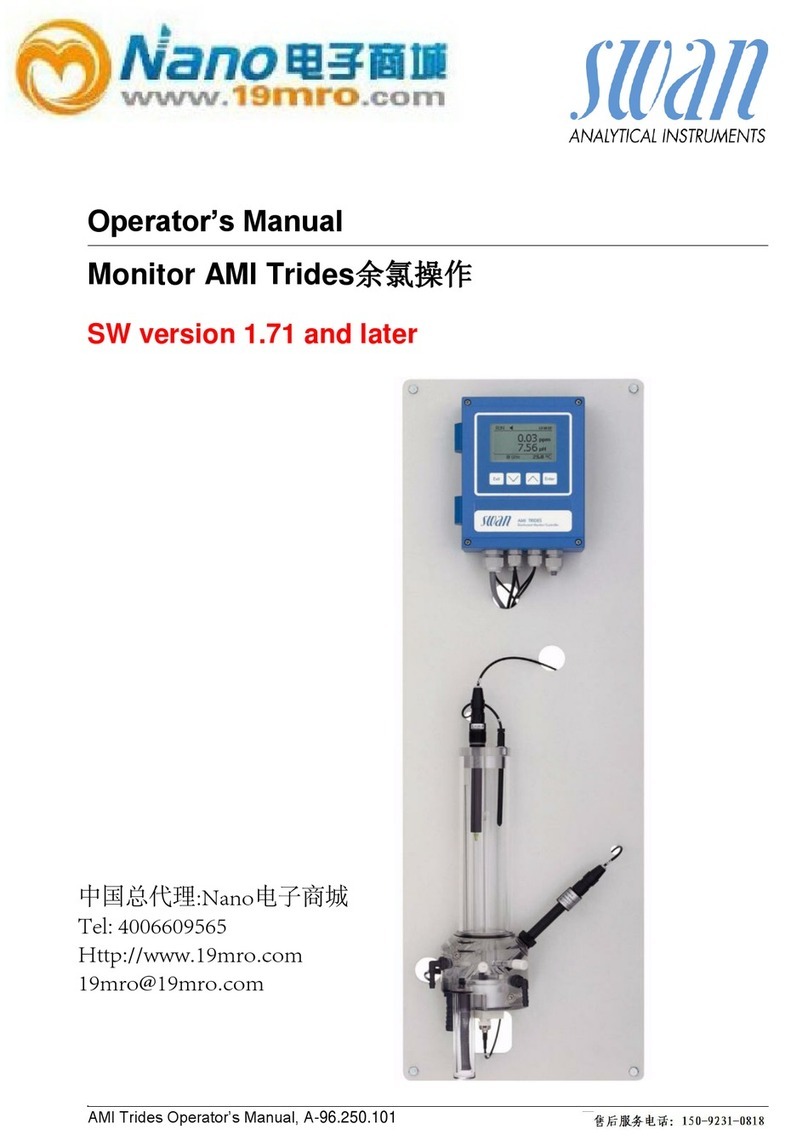
Swan Analytical Instruments
Swan Analytical Instruments A-85.119.010 manual
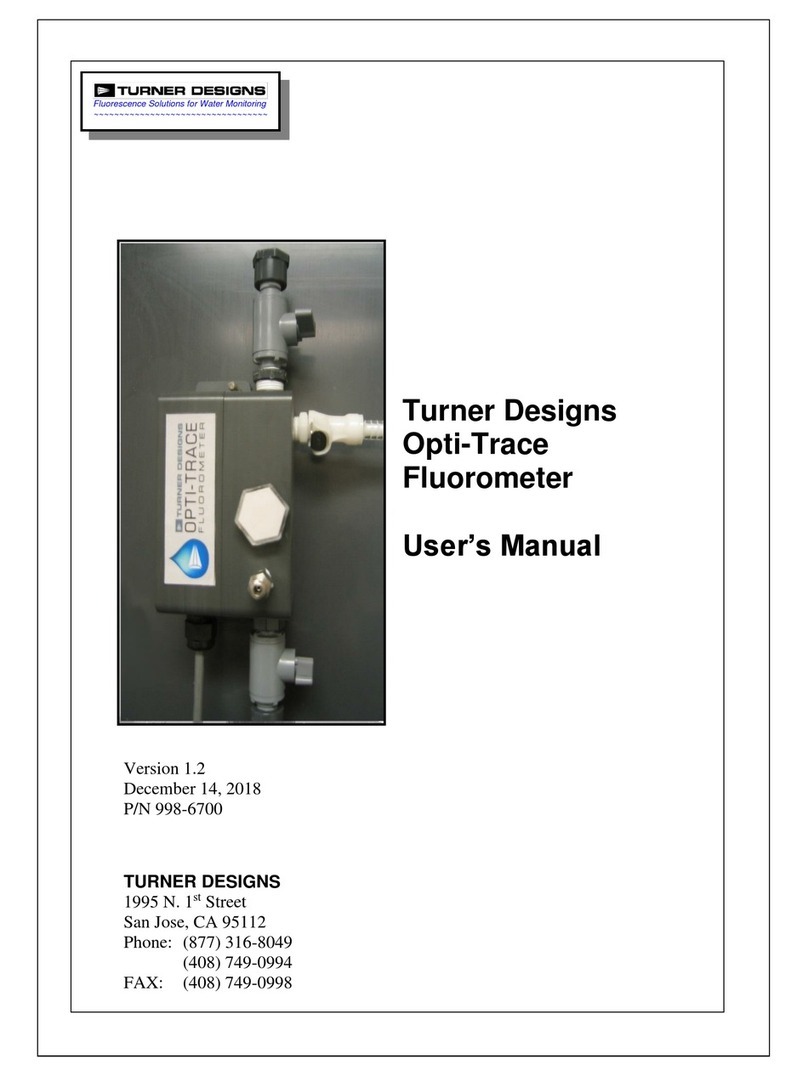
Turner Designs
Turner Designs Opti-Trace user manual
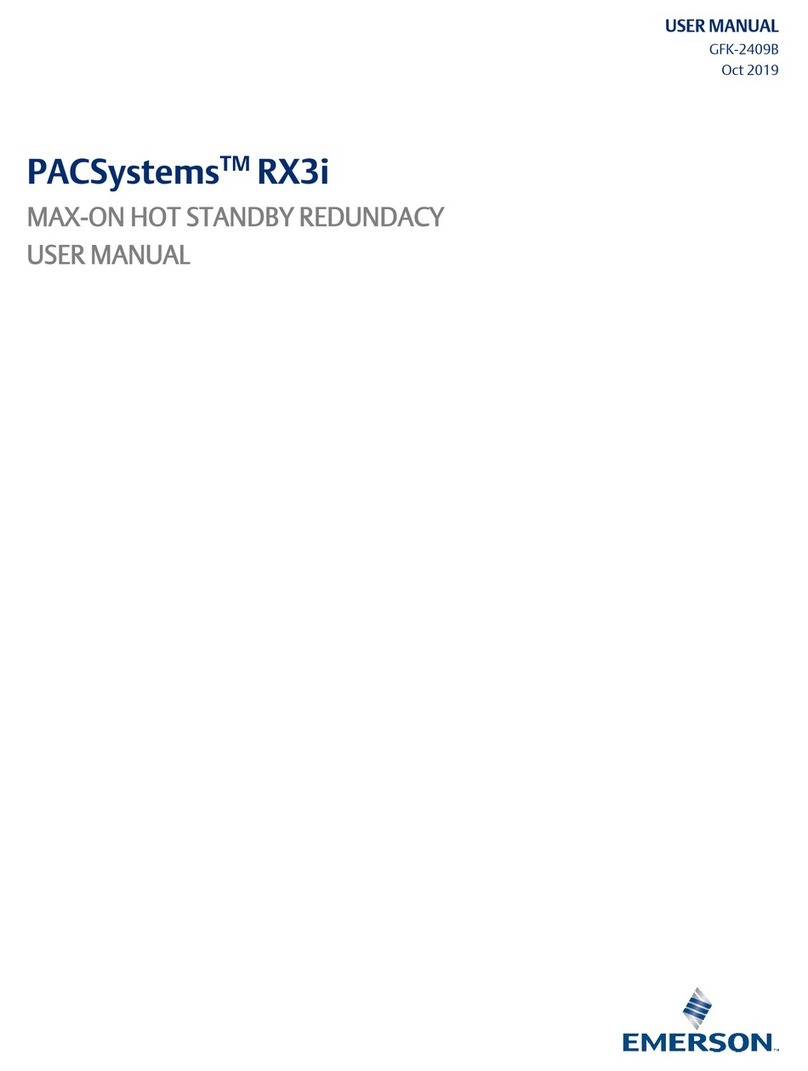
Emerson
Emerson PACSystems RX3i user manual
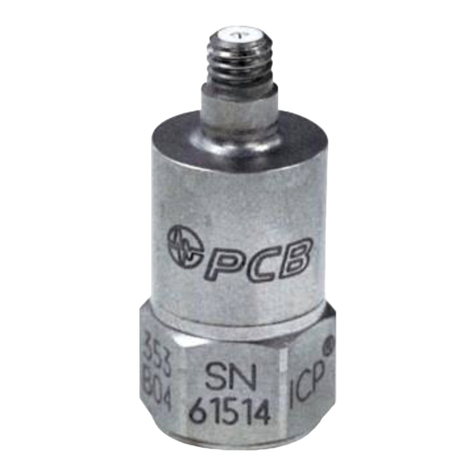
PCB Piezotronics
PCB Piezotronics 353B04 Installation and operating manual
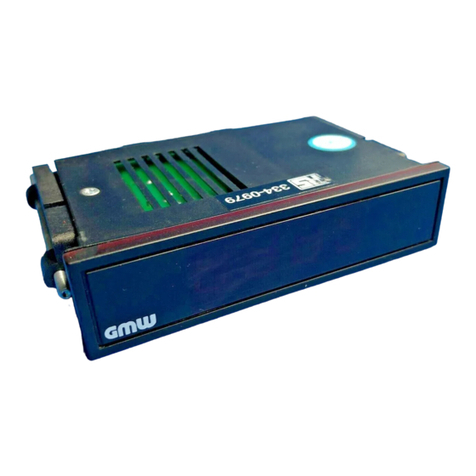
GMW
GMW DPM 24/96-2000 S operating manual
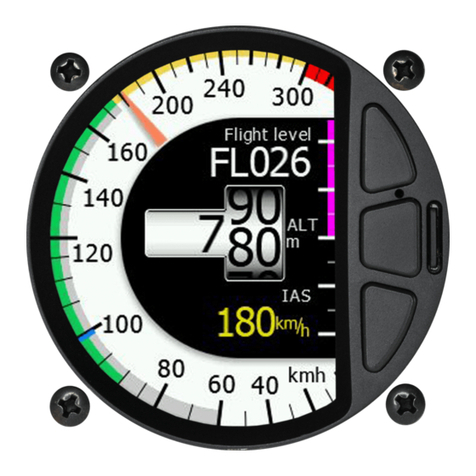
LXNAV
LXNAV Airdata indicator user manual

Vaillant
Vaillant airMONITOR Operating and installation instructions

Alicat
Alicat M-Series operating manual

LOVATO ELECTRIC
LOVATO ELECTRIC DMED302MID instruction manual

Sper scientific
Sper scientific 300058 instruction manual
